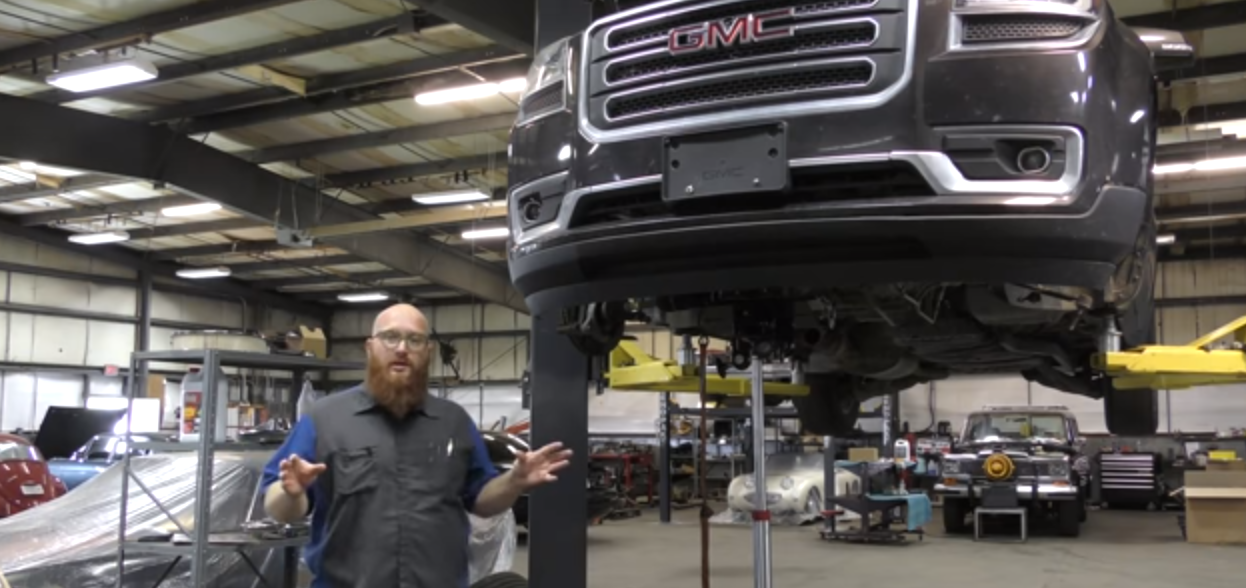
U.S. President Joe Biden served notice on the automotive industry that he expects auto makers to shift 50% of vehicle sales to those with electric power trains by 2030. Of course, he included plug-in hybrids in the mix – perhaps in deference to Toyota – and Tesla was oddly absent from the announcement made on the South Lawn of the White House with representatives of Stellantis, Ford Motor Company, and General Motors.
It was a bold move from Biden, the car guy son of a car dealer, and potentially at odds with his core UAW constituency (it’s going to take a lot fewer line workers to assemble EVs). There are even more ambitious plans for pushing fuel efficiency across the U.S. automotive fleet, meaning more details to come. There will be plenty in these Biden initiatives for dealers, car makers, unions, Republicans, climate change deniers, and internal combustion enthusiasts to complain about.
Let’s stop and think, before we complain, about what we are really saying good-bye to. Do we REALLY like internal combustion engines that much? I had the opportunity to ponder this question as I watched a car repair video narrated by a somewhat cynical but knowledgeable mechanic: David Long.
“Used Car Insanity in the Car Wizard’s Shop”
David Long – otherwise known as the Car Wizard of Omega Auto Clinic in Newton, Kansas, is the kind of guy you want with you when you are buying a used car – or buying any car. In his Youtube video, David provides the equivalent of a stroll through the sausage factory of an auto repair shop we all try to avoid.
From what David tells us in the video he is busier than ever with used car prices spiking and used car resellers more willing than usual to make needed repairs on used cars for resale. Says the blurb under the video: “With all the insane pricing in the used car market right now even the CAR WIZARD 🧙♂️ is getting the green light to make repairs that would NEVER have been approved a year ago. See just what needs to be repaired on this 2015 GMC Acadia, and why the customer (a used car dealer) agreed to the sky high bill.”
David proceeds to describe the process of diagnosing what was ailing the 2015 GMC Acadia in his care – a failed rear main seal – and the need to remove the transmission to get at it. David’s matter-of-fact telling of the tale will cause owners of vehicles that use internal combustion engines – most of us – to have flashbacks to their own expensive vehicle repairs.
David gives a tour de force review of motor mounts with oil leaks, failing timing chains, and inexpensive HVAC sensors buried buried deeply in dashboards requiring $1,000 dashboard extractions. A highpoint is his description of the finer points of crankshaft-camshaft synchronization and his personal experiences explaining to customers what is wrong with their cars and what must be done to fix them.
I am well acquainted with the business of repairing vehicles. It is very good, profitable business for car dealers, repair shops, and the wider automotive aftermarket industry.
Winning in that business, though, requires a delicate dance with the customer involving good diagnostic skills, customer education chops, patience, and some determination. Vehicles with internal combustion engines last on average upwards of 11 years on the road these days. A lot of expensive things can go wrong in 11 years.
Listening to and watching David Long’s video is enough to give anyone pause about ever buying another ICE vehicle. A pure electric vehicle has approximately 50% less parts content than a comparable ICE vehicle. Simply put, that’s a whole lot less that can go wrong.
One might look at David and consider him both blessed and cursed by his knowledge of ICE vehicles and their weaknesses. He describes the process of diagnostic discovery and how it can lead to savings or financial devastation.
We know ICE vehicles are dirty. We also know they are easy to own and operate – when they are functioning properly. EVs don’t require nearly as much care and feeding, but they aren’t yet easy to operate – from a charging standpoint. If we can solve the charging challenge, though, there are few of us that will miss those precious wallet-threatening moments with a skilled and diiplomatic mechanic. David’s video reminds us of what is at stake and the prospect of a much less complex future relationship with personal transportation.
Share this post via:





Intel’s Foundry Transformation: Technology, Culture, and Collaboration